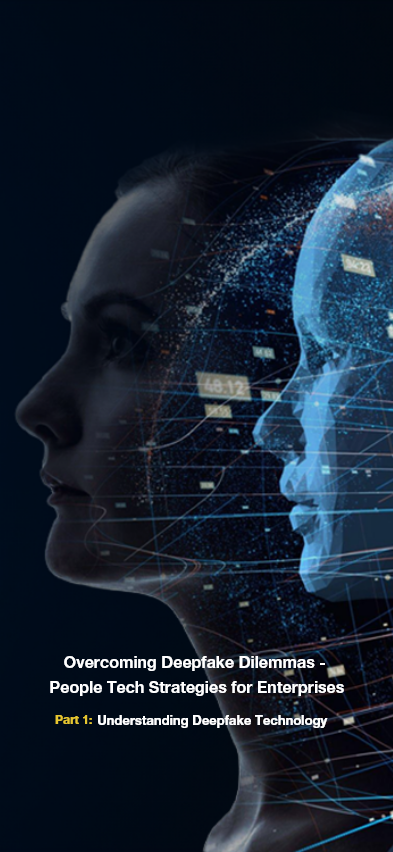

In the modern world where technology is ever-present, businesses face a new and more severe peril: deepfakes. These forms of artificial intelligence (AI) can be used in audio, video, and text. They have severe repercussions for a company’s security and reputation.
The rise of deepfake threats is alarming. Between 2019 and 2020, deepfake online content surged by 900%. Forecasts indicate a continued upward trend, with some researchers predicting that up to 90% of online content could be synthetically generated by 2026.
The term “deepfake” is coined by combining the elements of “deep learning” and “fake” referring to synthetic media that is created or modified by AI and deep learning algorithms. This technology is often used to create highly realistic false content by combining the look and voice of a person with another person’s image or video. Deepfake technology has been used in various real-world situations, raising concerns about its potential for abuse and deception.
Businesses should be aware of the tactics employed by malicious actors, such as using fake accounts in social engineering attempts, deceptive text and vocal messages to bypass security measures, and falsified videos for disseminating false information.
Let’s break down the risks of deepfakes for businesses in a more precise way:
1.Fraud: Deepfake tech can copy appearances and voices, making it difficult to authenticate someone. This can lead to criminals posing as leaders and making bad decisions, putting the company in danger.
2. Stock-price Manipulation: A deepfake video of a CEO sharing inaccurate news could cause stock prices to fluctuate. Investors might panic, and the market could become unsteady – not a good scenario.
3. Reputation and Brand Damage: A fake video of a high-ranking executive misbehaving could cause people to think it is accurate. This could adhere to the company and take a lot of effort to clean up.
4. Employee Experience and HR Issues: Deepfakes can also be used to create explicit content without permission. This can be a nightmare for HR and can harm the work environment.
5. Cybersecurity and Identity Theft: Deepfakes can disrupt a company’s online security. They could fool biometric systems or trick employees into disclosing confidential information. It is like a virtual heist with no one noticing until it is too late.
For instance, A false video of Russian President Vladimir Putin announcing martial law, comparable to deceptive videos of Barack Obama that, contributed to the propagation of misinformation.
Two public case studies involving deepfakes, with estimated losses of US$243,000 and US$35 million respectively, have come to light. In the first case at a British energy firm in March 2019, the CEO was deceived into transferring funds to a Hungarian supplier within an hour after receiving a call from his boss, the parent company’s German CEO. It is suspected that commercial voice-generating software was used. The second case, which was identified in Hong Kong, saw a branch manager receive a call from someone whose voice sounded like that of the company’s director, as well as multiple emails that he believed to be from the director. Deep voice technology was likely used to mimic the director’s voice, and in both cases, the firms were targeted for payment fraud.
Stay tuned for our Part 2: Strategies for Detecting Deepfakes, where we spill the beans on how organizations can improve their game-detecting deepfakes. It will be an engaging ride through strategies that make a real difference!
